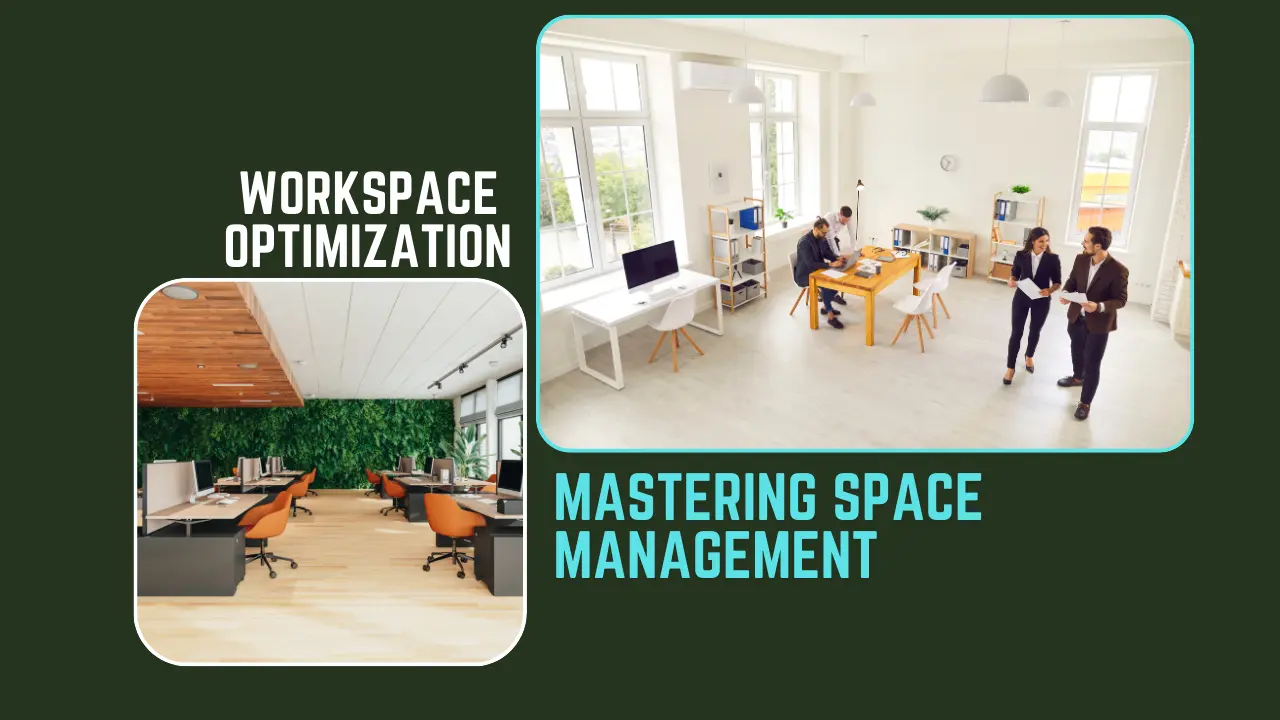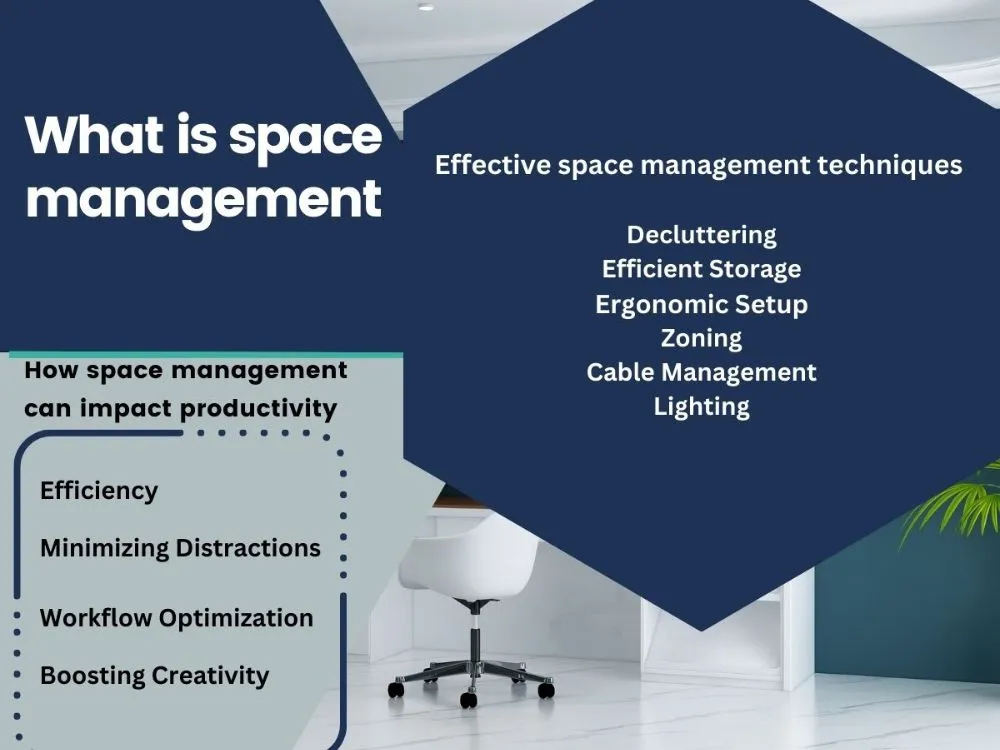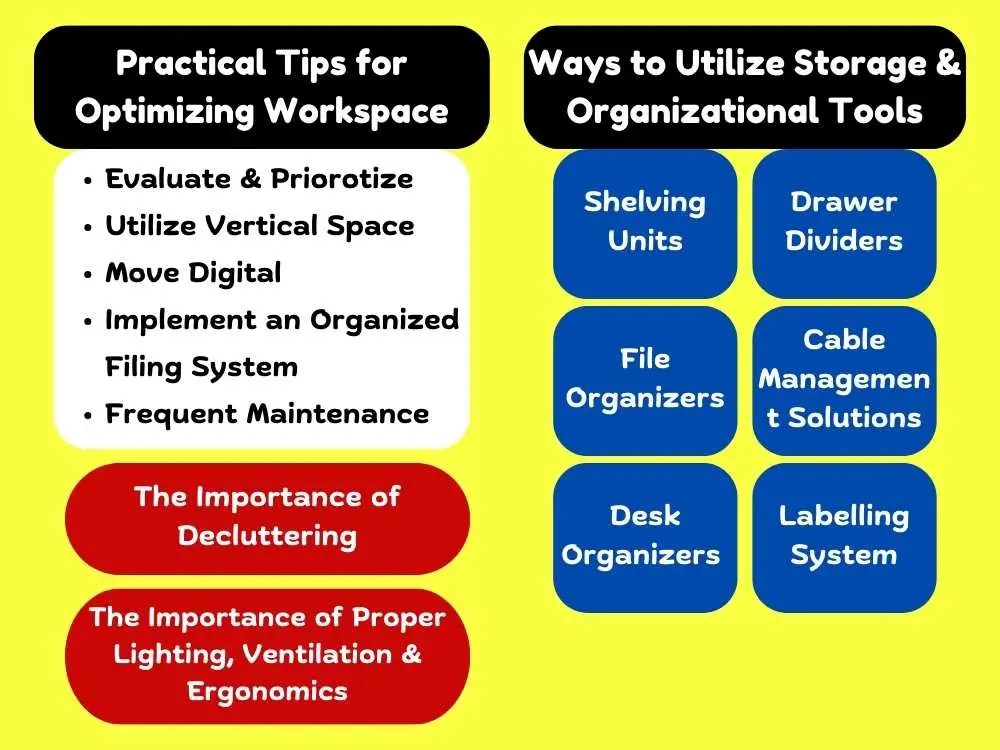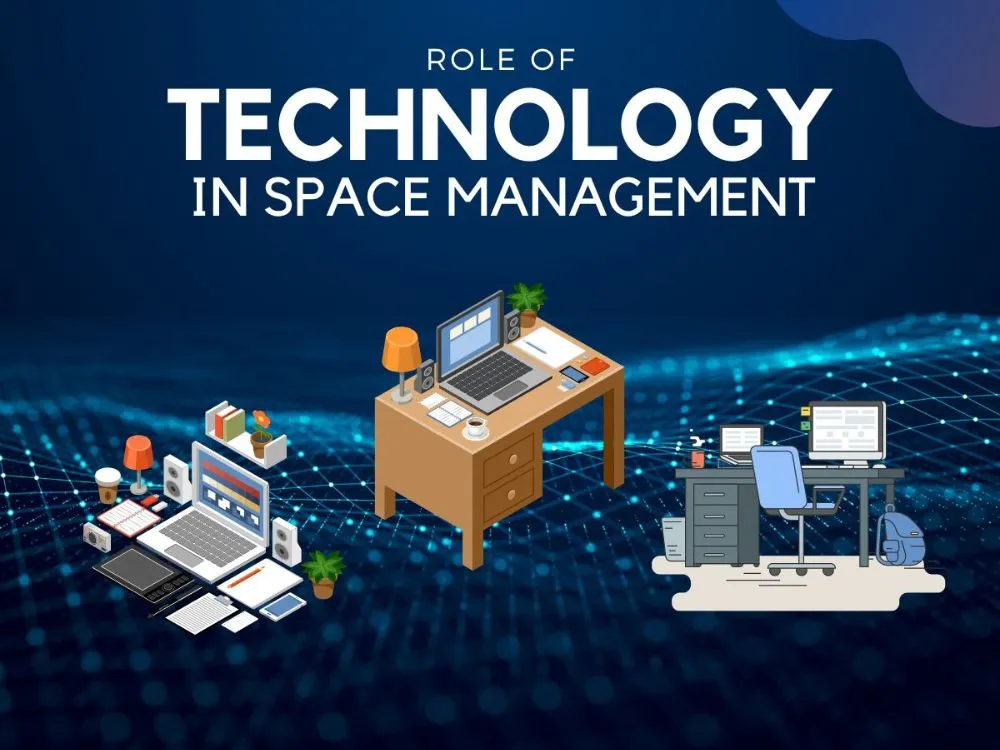
Workspace Optimization: Mastering Space Management
Have you ever noticed how some offices buzz with energy while others feel like a productivity black hole? That’s where space management comes into play. It's the secret thing behind creating a superb work environment that lets your team thrive and focus on what they do best.
Imagine that you are walking into an office that’s not just a place to work but a space that actually boosts your efficiency. Simply, space management is about maintaining a workspace in optimum condition that helps organizations establish a productive workplace.
This can create a compelling and flexible place for employees and visitors. Plus, utilizing various space management techniques helps maximize efficiency with the available resources.
Article Overview
- Understand the concept and significance of space management in creating an efficient and productive workplace.
- Learn how effective space management techniques, such as decluttering, efficient storage, ergonomic setups, and zoning, can enhance workplace productivity.
- Discover practical tips for optimizing the workspace, including evaluating and prioritizing improvements, utilizing vertical space, going digital, and implementing organized filing or document control systems.
- Recognize the importance of proper lighting, ventilation, and ergonomic design in maintaining a healthy and productive work environment.
- Explore the role of technology in supporting effective space management, including the use of digital file storage, cloud computing, task management tools, and other tech solutions.
Understanding Space Management

What is Space Management and Why It Matters
Space management is simply known as the effective planning and utilization of limited workspace to ensure maximum efficiency. It involves allocating resources and arranging equipment and furniture in a limited space.
It's important because it helps enhance employee productivity and overall well-being. Inefficient workspace management can impact employees' focus on work and lead to productivity losses. By effectively managing space, organizations ensure a better workplace for their employees.
This will create room for better employee engagement with work. When a workplace environment is pleasant, workers feel happy and active. On the flip side, inefficient workspace arrangement may cause several problems, including loss of engagement in work.
How Space Management Impacts Productivity
Space management plays a crucial role in influencing productivity levels. When organizations manage their workspace properly, it helps them achieve a positive impact on productivity. Here's how:
- Efficiency: Efficient space planning and utilization let workers quickly access resources, tools, and important stuff. This saves more time in performing job-related tasks and increases efficiency by reducing time wastage.
- Minimizing Distractions: Inefficient or disorganized space may lead to distractions. Implementing proper space management techniques helps avoid or minimize distractions by decluttering and organizing.
- Workflow Optimization: Space management involves arranging office desks, chairs, equipment, and necessary inventories in an organized way. It ensures a smooth movement within the workplace, resulting in a very smooth workflow and increased productivity.
- Boosting Creativity: To ensure a calm and risk-free workplace, space management is inevitable. It lets employees work stress-free, helps them boost their creativity level, and directly improves productivity.
Effective Space Management Techniques and Their Benefits
Space management techniques involve several methods that ensure a well-organized workplace. Here are some techniques listed below:
- Decluttering: Remove unwanted stuff in the workspace to avoid distractions and ensure a clean environment. Maintain the workspace by keeping only the essential items within reach.
- Efficient Storage: Store everything properly on shelves and drawers to maintain items in an organized way that can be easily accessible. Also, categorize and label things for easy identification and quick retrieval.
- Ergonomic Setup: Proper setup of furniture, computers, and space arrangements that influence postures. This space arrangement technique helps prevent ergonomic hazards at the workplace.
- Zoning: Based on different job functions, organizations divide the workspace into functional zones such as working area, dining, relaxing, etc.
- Cable Management: Using cable ties to properly arrange cables that utilize more space. This strategy helps prevent trips and falls.
- Lighting: Proper and adequate lighting comes under the space arrangement technique, which directly impacts the work. Prolonged work in an inadequate lighting space can lead to eye strain and other issues. This can be prevented by utilizing proper lighting techniques in space management.
Moreover, organizations gain significant benefits from utilizing effective space management techniques. This involves increased productivity, reduced costs, more flexibility, convenient mobility, better workers' performance, time-saving, enhanced occupants’ well-being, reduced employee turnover rate, and many more.
Tips for Effective Space Management

Practical Tips for Optimizing Workspace
To effectively optimize an organization's workspace, the following tips are useful:
- Evaluate and prioritize: By evaluating the workspace, organizations can easily determine different areas that need improvement. So, they can prioritize the relevant modifications pertinent to the specific requirements.
- Utilize vertical space: It's recommended to use vertical space, such as office walls, to establish vision boards, pegboards, or shelves that can save desk space.
- Move digital: Moving to digital technology helps organizations reduce paperwork, clutter, and the storage requirement for items.
- Implement an organized filing system: Implement a filing system by categorizing everything in applicable files. Plus, organizing them to minimize space requirements.
- Frequent maintenance: Maintenance of physical facilities is necessary, which involves proper housekeeping and equipment maintenance to keep everything in tip-top condition. This helps reduce unnecessary space utilization.
The Importance of Decluttering
Decluttering is essential to remove all kinds of clutter in a workspace to maximize space utilization and efficiency. Keeping unnecessary stuff or inventories in a particular space is useless and blocks human mobility, accessing important things, placing necessary items, and being aesthetically unattractive.
Moreover, a clutter-free workplace ensures a stress-free environment that boosts employees’ productivity and company success. Considering all these important factors, decluttering is crucial to keep a workspace tidy with only the necessary inventory.
Ways to Utilize Storage and Organizational Tools
Organizations use several effective ways to utilize storage and organization tools that improve the functionality of the workspace. Here are some ideas:
- Shelving units: Wall-mounted vertical shelves can be installed to store inventories, stationery, hardware, and other related items to free up desk space.
- Drawer dividers: These drawer dividers help store different items relevant to their category without getting mixed. It's useful to locate inventories quickly.
- File organizers: It can be useful to file important papers and digital documents. Using tags for paper documents and digital document organizers for digital files helps reduce storage space requirements.
- Cable management solutions: Arranging electrical cables using cable ties or clips that hide them underneath the floor or wall. This is an efficient space management solution that saves adequate space and prevents clutter.
- Desk organizers: Use various desk organizers such as pens, pencils, erasers, clips, and stapler holders to keep frequently used things within easy reach and keep a clutter-free space.
- Labeling systems: Labeling storage areas, shelves, and drawers can be efficient in accessing stuff quickly and reduce time wastage.
The Importance of Proper Lighting, Ventilation, and Ergonomics
It's crucial to have proper lighting, ventilation, and ergonomics to create a good and healthy workplace. Here are some reasons why they are important:
- Lighting: Adequate lighting in a workspace directly contributes to productivity. On the other hand, inadequate lighting may lead to eyestrain, stress, and fatigue. Therefore, it's important to provide adequate lighting based on the space requirement (it differs from place to place).
- Ventilation: It's vital to maintain a comfortable workspace where irrelevant temperature leads to discomfort and efficiency losses. It's necessary to choose an air-conditioning system based on the cooling load requirement of the space. This ensures proper ventilation for the occupants.
- Ergonomics: Ergonomic designs facilitate correct posture to reduce ergonomic risks such as the risk of musculoskeletal disorders, fatigue, back pain, and related problems. Chairs, desks, and computer monitors should be adjusted to an appropriate height, along with ergonomic accessories such as wrist supports and footrests to help maintain an appropriate body position.
Implementing proper measures to ensure adequate lighting, ventilation, and ergonomic setup in the workspace helps improve employees' focus and well-being by reducing associated problems.
The Role of Technology in Space Management

How Technology Supports Effective Space Management
Technology supports effective space management in various ways, such as:
- Storing documents in digital formats (digitizing) enables organizations to reduce the need for paper documents and physical storage requirements. Plus, it's useful to secure and transfer files quickly and easily between devices.
- Task management tools like automation software assist in performing the work conveniently without major employment of human resources or workspace utilization.
- Space planning software helps in planning an organization’s workspace in an optimized way.
- Cloud computing enables remote working setups that help reduce physical space requirements for many employees.
Examples of Tech Tools that Can Help in Organizing the Workspace
There are different tech tools available to help in organizing a workspace. Here are some examples:
- Project management software: Different project management software tools, such as Trello and Asana, effectively help organize project tasks, specify deadlines, and track work progress. It also assures that everyone remains on their responsibilities.
- Note-taking apps: Applications like Google Keep, Evernote, or Microsoft OneNote support organizations to organize their digital notes, concepts, and essential information in a centralized and searchable way.
- Digital document management systems: Software tools like Google Drive and Microsoft SharePoint let organizations easily store, share, and organize essential documents, which can decrease reliance on physical paper clutter.
- Virtual whiteboards: Tools like Miro or Mural deliver virtual collaborative whiteboards. Using this, organizations can create workflows and concepts to organize information in a digital and shareable form.
- Productivity apps: Application tools like Todoist, Any(dot)do, or Microsoft To-Do help in making to-do lists, setting important reminders, and prioritizing tasks, which help organizations to stay organized and attentive.
Final Thoughts
It's important to maintain a workspace where effective space management techniques play a pivotal role in achieving this goal. By utilizing different space management techniques, organizations can able to optimize overall efficiency, lower distractions, facilitate workflows, and boost creativity.
Techniques like decluttering, efficient storage solutions, ergonomic setups, zoning, cable management, and proper lighting are highly useful in creating a well-organized workspace. Also, some practical tips can further improve space management, such as prioritizing needs, utilizing vertical space, switching to digital technology, and implementing an organized filing system.
FAQs
Q1: Why is space management important?
Effective space management can improve an organization's workflow, minimize distractions, enhance employee well-being, and boost overall productivity.
Q2: How does proper lighting impact productivity?
Adequate lighting in the workspace reduces problems like eyestrain, stress, and fatigue, thereby improving focus and productivity.
Q3: What benefits can organizations gain from effective space management?
Effective space management is useful to increase productivity, reduce costs, enhance flexibility, improve employee performance, and promote a positive work environment.
.webp)